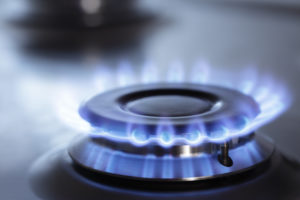 Natural gas rallied on Friday, offsetting the prior sessions drop and snapping three straight weekly losses, as cold weather across the northern and eastern US spurred significantly stronger heating demand that is poised to keep inventory levels near the five-year average.
Natural gas rallied on Friday, offsetting the prior sessions drop and snapping three straight weekly losses, as cold weather across the northern and eastern US spurred significantly stronger heating demand that is poised to keep inventory levels near the five-year average.
Natural gas for delivery in March rose 3.35% on Friday to settle the week 8.6% higher at $2.804 per million British thermal units. The contract fell by more than 17% in the previous three weeks. Prices held in a weekly range between Thursdays two-week high of $2.883 and Mondays low of $2.571.
The Energy Information Administration reported on Thursday that US natural gas stockpiles fell by 160 billion cubic feet in the week ended February 6th, beneath analysts’ expectations for a decline in the range of 165-175 bcf and well below the five-year average draw of 178 bcf. Stockpiles slid by 234 bcf during the comparable week a year earlier.
Total gas held in US storage hubs amounted to 2.268 trillion cubic feet, narrowing the deficit to the five-year average of 2.279 trillion to 0.5% from 1.2% a week earlier. The surplus to the year-ago storage of 1.726 trillion cubic feet expanded to 31.4% from 23.9% during the preceding period.
The bearish report brought prices down by 3% on Thursday but saw no follow-through the next day as forecasts for colder-than-usual weather across large parts of the US spurred expectations for much higher heating demand.
NatGasWeather.com reported on Friday that natural gas demand in the US will be high compared to normal through February 19th, with warm conditions set to dominate the West over the next seven days, while the central US turns cooler and the East remains cold.
A cold blast was expected to hit the Midwest and East this weekend, bringing snow accumulations and strong winds to the Northeast, with below-freezing temperatures pushing deep into the Southeast as well.
The central and western US, including Texas, will remain mild, putting a damper on national heating demand, but as large parts of the country are engulfed by colder-than-usual conditions, it is still expected to be stronger than usual.
Last weekend and this past weeks warm conditions over the southern, central and western US will result in a very thin inventory decline to be reported on February 19th that will most likely turn five-year average stockpile deficits into surpluses. The five-year average decline for the week ended February 13th is 180 billion cubic feet, while inventories slid by 247 bcf during the comparable period a year earlier.
However, as cold weather spreads its reach outside the Midwest and Northeast this weekend and next week, the following inventory report, due on February 26th, will likely show a much larger inventory withdrawal, keeping supplies near the average.
“Essentially, cold blasts and periods of rain and snow are lined up for the next two weeks, some stronger than others, but they will continue to bombard the northern and eastern US with bouts of below normal temperatures,” NatGasWeather.com said in a Friday mid-day update. “The longer this lasts, the more bullish weather sentiment will become, especially if the cold reservoir over Canada can reload and push back into the US in early March, which the latest morning data continues to show potential for.”
Temperatures
According to AccuWeather.com, readings in New York on February 17th will range between 14 and 25 degrees Fahrenheit, compared to the average 29-42, and will bottom at 5-9 degrees the following three days. Highs will establish above the freezing point after February 22nd and will reach seasonal levels five days later. Chicago will see temperatures range between -5 and 4 degrees on February 18th, compared to the normal 22-37, with highs not expected to find stable ground above the freezing through the end of the month.
Down South, Houston will reach 68 degrees tomorrow, 2 above usual, and will experience seasonal and slightly lower readings through the end of the month. On the West Coast, temperatures in Los Angeles will max out in the mid and high 70s, with a few exceptions, through February 26th, compared to the average 69 degrees.
Pivot points
According to Binary Tribune’s daily analysis, March natural gas futures’ central pivot point stands at $2.757. In case the contract penetrates the first resistance level at $2.858 per million British thermal units, it will encounter next resistance at $2.912. If breached, upside movement may attempt to advance to $3.013 per mBtu.
If the energy source drops below its first support level at $2.703 per mBtu, it will next see support at $2.602. If the second key support zone is breached, the power-station fuel’s downward movement may extend to $2.548 per mBtu.
In weekly terms, the central pivot point is at $2.753. The three key resistance levels are as follows: R1 – $2.934, R2 – $3.065, R3 – $3.246. The three key support levels are: S1 – $2.622, S2 – $2.441, S3 – $2.310.





